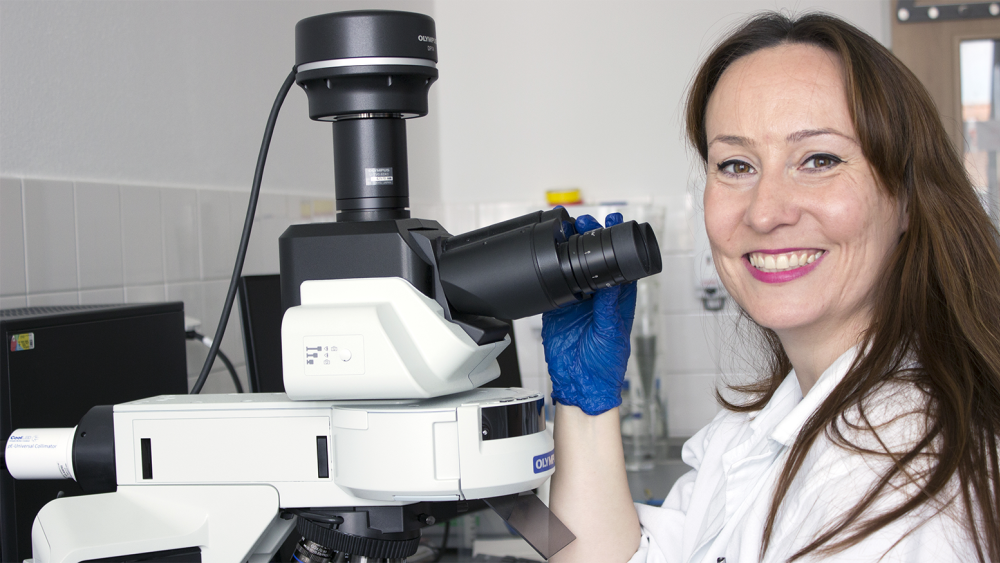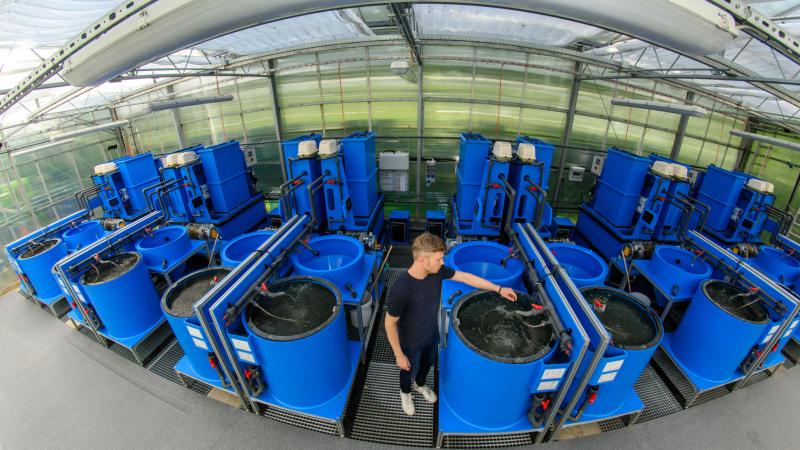
© Thora Lieke
Our world currently harbors over 8 billion people, and all these people are hungry. Over 50 per cent of the fish we consume already comes from aquaculture farms, which raise fish for our food. But many people ask themselves: Isn't farmed fish full of chemicals?
We all know the problem: The more individuals gather in close quarters, the easier diseases spread. We are crammed like sardines on crowded buses and trains during flu season, people are coughing and sniffling – and two days later, we fall ill ourselves. Fish farming faces similar challenges. Once a disease take hold, treatment options are limited. Often, the only solution is to use medications for the entire fish population. This poses risks to the well-being of the fish, the environment, and, ultimately, us humans.
We need new approaches to breed healthy and sustainable fish as a vital food source. In this pursuit, we take advantage of the fact that living organisms already possess a remarkably effective defense system, the immune system, which protects them from disease-causing agents - known as pathogens. One of the key enzymes of the immune system is lysozyme. Lysozyme targets and breaks specific chemical bonds found exclusively in bacterial cell walls. Water from the environment then enters the bacterial cell, causing it to burst and die. Additionally, we have specialized cells called phagocytes or scavenger cells. The name says it all: phagocytes take up invading pathogens and digest them, keeping the tissue clean.

© Thora Lieke, created with Biorender.com
A proven method to boost the immune system for disease prevention is to take certain substances with food. These substances wake up the immune system and put it in a mild state of alertness, which is why they are called immunostimulants. Then, when our immune system encounters a pathogen, it can respond more quickly and efficiently. Among these immunostimulants are humic substances, more specifically, water-soluble humic acids and fulvic acids. We have all unknowingly encountered these substances before: they are the brown stuff that discolors the water when we water potted plants.

© Christian E.W. Steinberg
Humic substances have already made their mark in animal husbandry, enhancing growth and curbing diseases when added to the diets of cows, pigs, and fish. Since humic substances are present in almost all natural waters, fish in the wild are constantly exposed to certain concentrations of these substances. This prompted us to ask: Why don't we add it directly into the water instead of expensively adding the immunostimulant to the feed? This way, even fish larvae, solely reliant on the yolk for nutrition, could be effectively protected.
To unveil the answers, we enlisted the help of a small fish: the zebrafish. Renowned for their ease of maintenance in aquariums, rapid reproduction, and transparent larvae, these fish have become beloved model organisms in diverse research fields. Astonishingly, when we raised the larvae in low to medium concentrations of fulvic acid, they hatched earlier than the control animals without supplement. However, despite their accelerated debut, they were fully developed and thrived happily around in their containers. Evidently, fulvic acid had a positive effect on the fish. Furthermore, we observed activation of genes associated with growth and hatching, indicating heightened metabolic activity that enabled more efficient utilization of yolk energy. And what about the immune system? The fish's immune system also appeared to be enhanced, as we found higher levels of the lysozyme and phagocytes mentioned earlier.
But be aware! At high concentrations, fulvic acid adversely affected the fish, inducing fluid retention-induced swelling (edema), tissue hemorrhaging (hematomas), and circulatory disruptions. To avoid such negative effects in aquaculture – our goal are healthy fish – we had to clarify the underlying mechanisms.
Humic substances can be radicals, which are molecules possessing unpaired electrons. These unpaired electrons make radicals highly reactive and unstable, allowing them to react quickly with other molecules. When they interact with water or biological structures, reactive oxygen is generated. If not counteracted by appropriate mechanisms, it leads to tissue damage – so-called oxidative stress. We can visualize the reactive oxygen using a specific dye that fluorescences upon contact. Indeed, the larvae raised in high concentrations of fulvic acid started to glow green when exposed to the dye. The control animals, on the other hand, remained unaltered. Our little model fish taught us that low to medium concentrations of fulvic acid positively affect growth and activate the immune system. This discovery showcases the immense potential of fulvic acid in aquaculture. However, the question lingers: Can these remarkable outcomes be replicated in edible fish? So, let's leave the microscope behind and head to the fish tanks.

© Thora Lieke, created with Biorender.com
Fish production is an important sector in the global economy, with the average German consuming 15 kilograms of fish per year. Improving animal welfare and health is essential to ensure that the fish we eat are produced sustainably and healthily.
Our research results clearly demonstrate that fish growth can be increased, and their defenses against diseases can be strengthened. Our fulvic acid serves as a natural fish pharmacy! Adding it to the water is a simple and cost-effective method, circumventing the complexities associated with specialized feed production. Thanks to fulvic acid, we can enjoy delicious and healthy fish dishes derived from sustainable aquaculture without any worries.
The article has been written within the framework of the Klar-Text-Preis for science communication.




